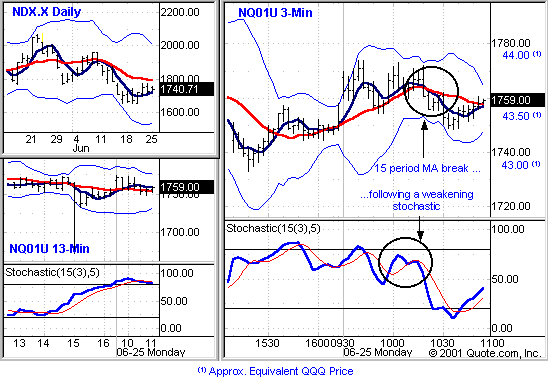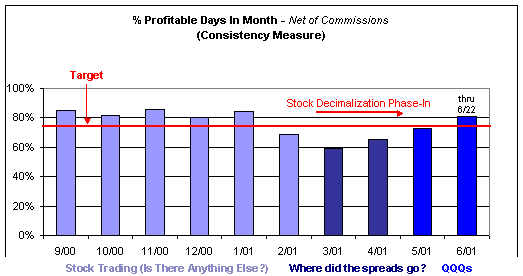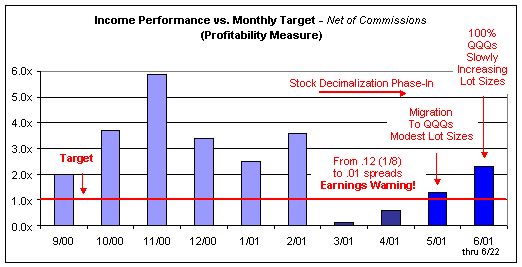|
Why
the Qs?
I mentioned last week that I recently migrated from trading stocks
intraday to trading the Qs, largely as the result of stock
decimalization that reduced spreads to virtually nothing. The
decision to switch was driven by both a personal “earnings
warning” (more on that in a bit) and recognition that I
needed to now use time as more of an ally in the new “penny
for your thoughts” world, which I felt could be better done
with acceptable risk by trading an overall market. While both the
Qs and stocks now trade in decimals, general markets tend to move
more fluidly, unencumbered by obstacles such as hidden market
maker (and dreaded INCA) supply and demand. What that basically
means is no more screaming “Move
it GSCO!” at your monitor
when you correctly position for a futures spike and your stock
just sits there. Add growing liquidity via Island and being able
to legally short on downticks, and you have an appetizing recipe.
Now about that earnings warning. With all of the recent market
maker earnings warnings, layoffs, and downgrades resulting from
disappearing spreads, it’s no surprise that this intraday trader
and many of my professional peers also experienced a drop in
performance this spring. As I continually gauge my own performance
using consistency and net profitability measures, both indicators
raised a red
flag earlier this year:
|
|





